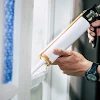10 Signs It’s Time to Replace Your Bathroom Caulking
Your bathroom is one of the busiest rooms in your home, and keeping it in good condition isn’t just about aesthetics — it’s about maintaining hygiene, preventing water damage, and avoiding costly repairs. One simple but often overlooked maintenance task is checking your bathroom caulking.
Over time, caulking — the sealant used around your shower, bathtub, sink, and other wet areas — wears out, cracks, or develops mould. When that happens, it can lead to leaks, water damage, and even structural issues. But how do you know when it’s time for bathroom resealing? If you’re based in Melbourne or anywhere else, these 10 signs will help you spot when your bathroom caulking needs replacing.
-
Visible Cracks or Gaps in the Caulking
The most obvious sign that your bathroom caulking needs attention is when you notice cracks or gaps forming along the edges of your bath, shower, or sink. These openings allow water to seep into areas it shouldn’t, leading to potential water damage behind walls or under floors. Even tiny cracks can cause significant problems over time, so it’s wise to act as soon as you spot them. -
Mould and Mildew Growth
Bathrooms are naturally damp environments, making them the perfect breeding ground for mould and mildew. If you notice black, green, or brown patches forming along the caulking lines, it’s a clear sign the seal is compromised. While you might be tempted to clean it off, mould often embeds itself within deteriorating caulking. In such cases, the best solution is to remove and replace it entirely. For homeowners in Melbourne, professional bathroom resealing Melbourne services can handle stubborn mould and prevent its return.
- Caulking is Peeling Away
Good quality caulking should stay firmly in place, adhering smoothly to surfaces. If it’s peeling, lifting, or pulling away from the edges, it can no longer do its job. This is a clear signal that your bathroom needs resealing. Not only is peeling caulk unsightly, but it also leaves areas vulnerable to water leaks.

- Water Leaks or Damp Patches Nearby
If you notice unexplained damp patches on walls or ceilings adjacent to your bathroom, or puddles forming where they shouldn’t, worn-out bathroom caulking could be the culprit. Faulty caulking allows water to escape and travel into other parts of your home, causing unseen water damage and encouraging mould growth behind walls.
- Discolouration or Staining
Old caulking tends to discolour over time, turning yellow, brown, or grey. While age alone doesn’t always mean it needs replacing, if your caulking has significant stains or discolouration, it’s often a sign of moisture getting trapped inside. Fresh, bright white or clear caulking keeps your bathroom looking clean and hygienic.
- It Feels Hard and Brittle
Run your finger along your bathroom Caulking Melbourne — if it feels hard, brittle, or begins to crumble, it’s lost its flexibility. Quality caulking should remain slightly soft and pliable to handle natural shifts and expansion of surfaces. Brittle caulking cracks easily, making it ineffective at sealing out moisture.
- Lingering Musty Smells
Persistent, musty odours in your bathroom could point to hidden mould or mildew, often lurking behind old caulking. Even if you can’t see visible signs, moisture trapped behind deteriorating caulk can lead to unpleasant smells. Replacing the old caulking will help remove the source of these odours and refresh your bathroom’s air quality.

- Caulking is Over 5 Years Old
Even if your bathroom caulking looks okay on the surface, it’s a good idea to check its age. Most bathroom caulk has a lifespan of around 5 years, depending on usage and environmental conditions. After this period, it begins to lose its sealing properties. If it’s been a while since you last replaced it, now’s a good time to inspect and possibly reseal.
- Increased Energy Bills from Hidden Moisture Issues
You might be surprised to learn that faulty bathroom caulking can indirectly affect your energy costs. Moisture issues caused by water leaks can increase humidity levels in your home, forcing heating and cooling systems to work harder to maintain comfortable temperatures. If your energy bills have crept up without a clear reason, it might be worth checking your bathroom for signs of leaks and deteriorating caulking.
- Planning a Bathroom Renovation
If you’re updating fixtures, repainting, or giving your bathroom a fresh new look, don’t forget about the caulking. Old caulking can look out of place with new tiles or fittings. Replacing it as part of your renovation ensures a clean, professional finish and a watertight seal that complements your upgrades. If you’re in Melbourne, bathroom resealing Melbourne specialists can assist with both cosmetic and functional resealing during your bathroom makeover.
Why Timely Bathroom Caulking Replacement Matters
Replacing your bathroom caulking isn’t just about appearance — it’s about protecting your home from water damage, mould growth, and costly repairs. Well-maintained caulking preserves your bathroom’s structure and prolongs the life of your tiles, tub, and other surfaces. Plus, it keeps your bathroom looking fresh and clean, which is essential for hygiene and daily comfort.
Professional bathroom resealing Melbourne services ensure the job is done properly, using high-quality, mould-resistant products designed to last. Experienced specialists can remove old, damaged caulking without harming your tiles and apply new seals with precision, preventing future leaks and issues.
Final Thoughts
Bathroom maintenance doesn’t have to be complicated, but overlooking small things like worn-out caulking can lead to major headaches down the track. Regularly inspecting your bathroom caulking for the signs listed above can help you catch problems early and keep your bathroom in excellent condition.
If you notice any of these signs or simply want to freshen up your bathroom’s appearance, consider reaching out to a professional bathroom resealing Melbourne service. They’ll take care of the messy work and leave your bathroom sealed, secure, and spotless.
